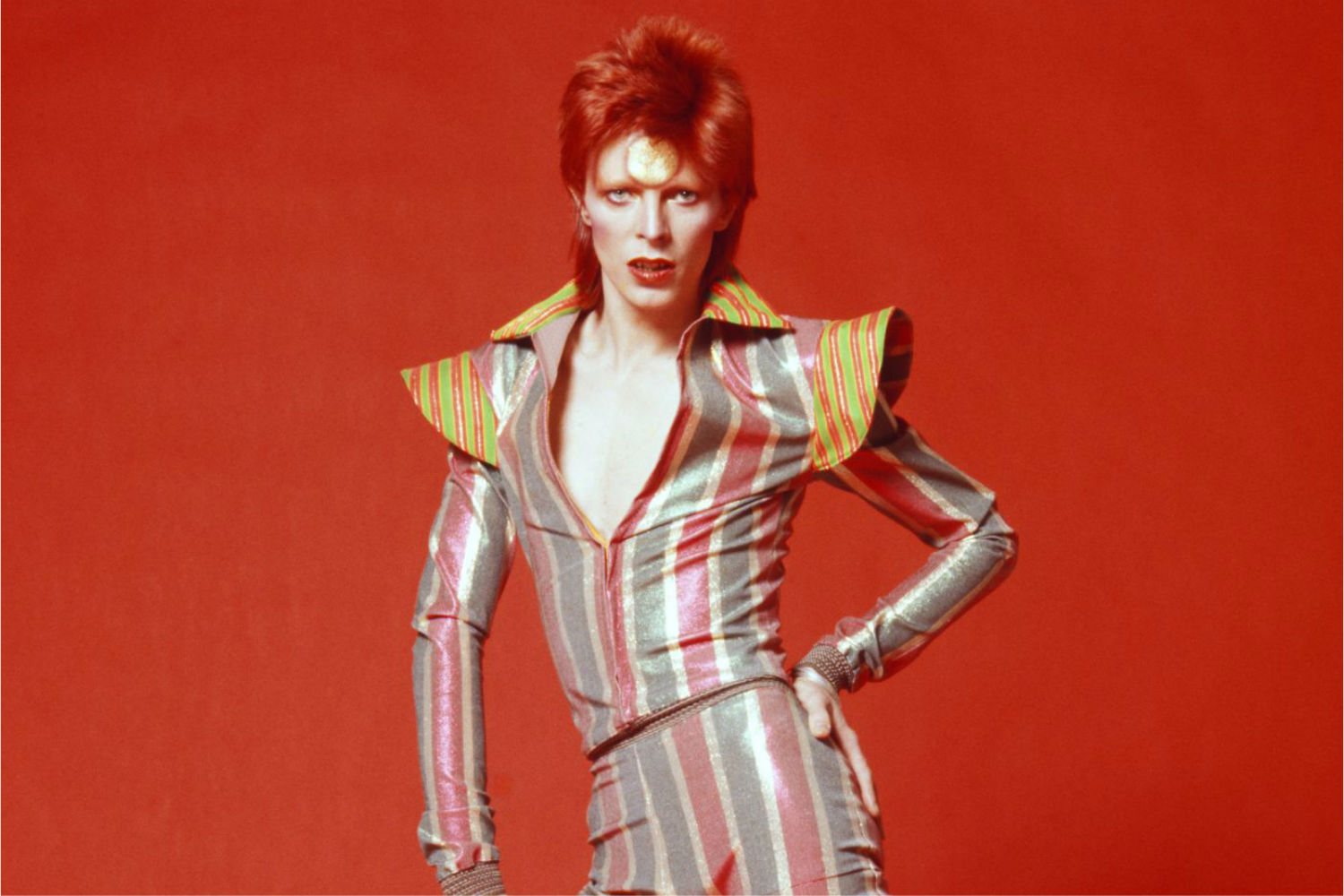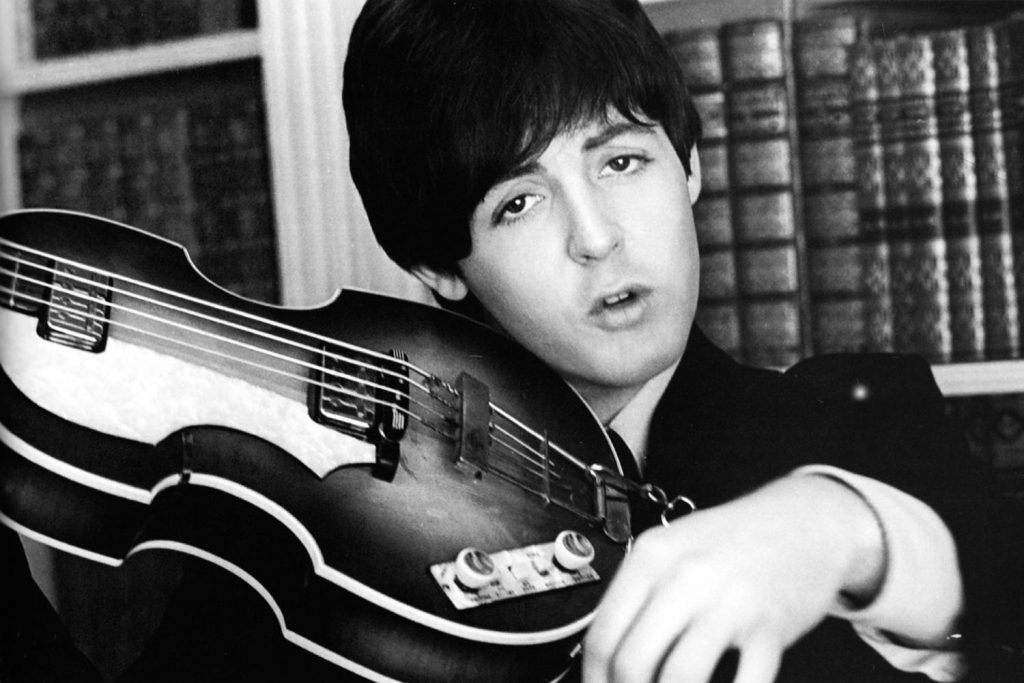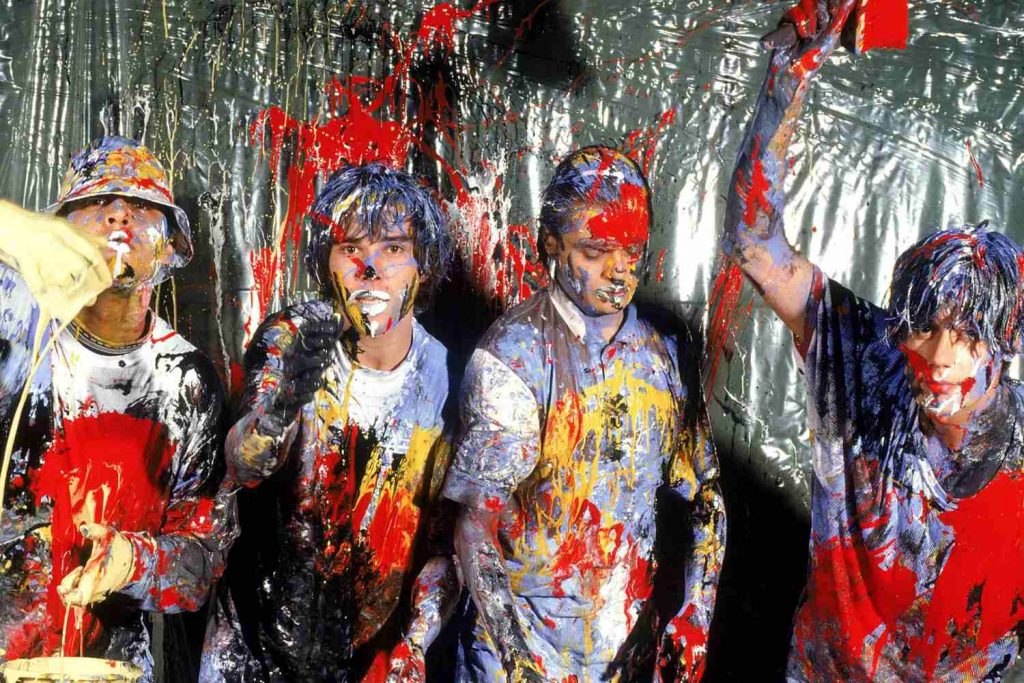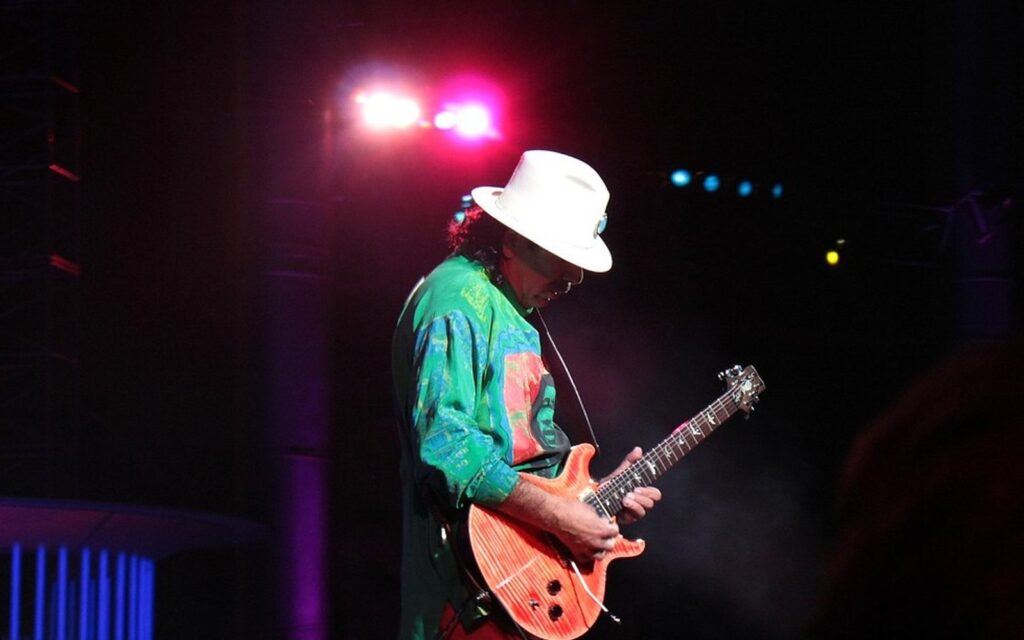From 'Space Oddity' to 'I Can't Give Everything Away', these David Bowie songs showcase the career progression of the Starman.
To celebrate the genius of David Bowie five years after his gut-wrenching death, we’re diving into his illustrious discography to revisit the amazing artistic evolution of one of music’s all time greats.
Read up on all the latest features and columns here.
Space Oddity (1969)
Prior to his commercial breakthrough, Bowie was toying with a number of genres to try and assert his sound, bouncing between jangly rock, hush folk and baroque pop influences.
While the psychedelic folk stylings of ‘Space Oddity’ didn’t exactly demonstrate Bowie straying too far beyond the norm, there’s certainly some moments of sheer brilliance: the build-up before the chorus and in the bridge is sensational, and the heart-wrenching narrative arc of Major Tom is one that’ll never lose its potency.
Life On Mars? (1971)
After creating the surprisingly heavy 1970 LP The Man Who Sold The World, Bowie struck gold the following year with Hunky Dory: a commercial and critical success that saw the enigmatic artist begin to show flourishes of his genius.
In between the jaunty pop of ‘Changes’ and the sassy glam of ‘Queen Bitch’ lays ‘Life On Mars?’: a sublime piano ballad penned in response to the US and Soviet Union’s gambit to reach the red planet. Between Bowie’s raw, one-take vocal performance, the rapid glissando of the strings and the tape delay drums, ‘Life On Mars?’ demonstrates a young Bowie at his finest – but the best was yet to come.
Suffragette City (1972)
Eschewing the piano-driven cuts of his past album in favour of electric guitars and adopting the persona of Ziggy Stardust – a bisexual rockstar sent from above to save Earth – Bowie’s fifth studio album was nothing short of a game-changer when it landed in June of 1972.
There’s nary a bad track to be found on The Rise and Fall of Ziggy Stardust and the Spiders from Mars – ‘Starman’ and ‘Ziggy Stardust’ are certified glam classics, while ‘Moonage Daydream’ and ‘Rock ’n Roll Suicide’ help to spotlight the chemistry of Bowie and his guitar-slinging counterpart Mick Ronson. However, it’s ‘Suffragette City’ that best epitomises Bowie’s evolution on Ziggy Stardust: roaring glam guitars and triumphant horn blasts back Bowie’s story of sex and sin as an ARP synthesiser drones in the background, teasing the electronic explorations that would lay ahead.
Rebel Rebel (1974)
‘This ain’t rock ’n roll, this is genocide!’ Bowie yelps as Diamond Dogs springs to life with a blues-rock boogie, introducing the listener to one of his most adventurous records of his early ‘70s era. Here, Bowie lets his freak flag hang high and turns in some of the most sonically unique material to date. The slinky, dystopian proto-disco of ‘1984′ is a surreal highlight, while the atmospheric ‘Sweet Thing’ remains one of the more underrated emotional cuts in the Bowie back catalogue.
Wedged in between all that madness is a a little glam gem by the name of ‘Rebel Rebel’. With its iconic guitar riff and relentless four-to-the-floor backbeat, it’s a rock ’n roll stomper that saw Bowie pay tribute to all the weirdos of the world, addressing everything that made him an icon of the era: gender-bending characters that strike worry their parents with their flamboyant ways, plenty of dancing, and of course, plenty of drugs.
Fame (1975)
Less than 12 months after releasing the glam opus of Diamond Dogs, Bowie took a left turn in favour of the soul, funk and R&B that adorned his next release, Young Americans. While the critics were mixed, Young Americans proved to be a hit in the US thanks to to the success of its title track, and in retrospect, several parties have celebrated the album due to Bowie’s explorations into what many considered as Black genres at the time.
For many, Young Americans is best defined as Bowie’s coke album, and it’s on the track ‘Fame’ where this is most apparent, with his raspy vocals a surefire sign of some copious powder usage. Written in protest to his new found stardom alongside John Lennon, the track sees Bowie adopt the slinky funk of Sly & The Family Stone and James Brown, with the heavy groove of the song being complemented by left-field production techniques such as reverse tape loops and quirky sampling.
Warszawa (1977)
In the second half of the ‘70s, a drug-addled Bowie made the move to Berlin to bunker down in the studio with Brian Eno to work on some of his most experimental music yet, with the sessions producing the stellar Station to Station and three more strikingly different records colloquially known as the Berlin Trilogy.
While the spacey, funky sounds of Station To Station hinted at what was to come, it’s undeniably Low that stands out as the masterstroke in the trilogy. Aided by the production genius of Tony Visconti and his mind-blowing mastery of the Eventide H910 Harmoniser, Low begins as a collection of avant-garde art-rock, as best exemplified by tracks like ‘Speed Of Life’ and the gleaming ‘Sound and Vision’.
However, it’s the flip side of the record that’s truly ground-breaking, with Bowie and Brian Eno diving head-on into abstract ambient music on the immersive ‘Warszawa’. A near-wordless composition, ‘Warszawa’ was crafted around Eno’s experimental approach to electronic music, with modular synthesiser loops and Bowie’s ghostly vocals colliding to make a track that’s as haunting as it is gorgeous.
Heroes (1977)
The final instalment in the Berlin Trilogy, “Heroes” was named by many publications as one of the best records of 1977 upon release, with critics lauding Bowie’s artistic maturity and the record’s fascinating production. While essentially featuring the same cast of collaborators as heard on Low, “Heroes” did see the addition of a notable new face to the fold: King Crimson’s Robert Fripp, and it’s thanks to him that we’ve got one of Bowie’s finest cuts of all time in ‘Heroes’.
Atop of a simple D-G progression made all the more dazzling by Fripp’s endlessly feedbacking guitar and Eno’s abstract electronics, Bowie sings a story of two lovers divided by the Berlin Wall, betrayed by fate as they seek to be with one another – even if it is just for one day.
‘Heroes’ is also considered by many to be Bowie’s finest recorded vocal performance, with Visconti purposefully moving the microphone away from the singer throughout the track, forcing him to strain his vocals and eventuate in its impassioned climax.
Ashes To Ashes (1980)
More than a decade after introducing the character in his breakthrough ‘Space Oddity’, Bowie would revive the character of Major Tom for the new-wave bop of ‘Ashes To Ashes’, one of the standouts from 1980’s Scary Monsters (and Super Creeps) alongside its title track and ‘Fashion’.
Embellished with dorky slap bass and Chuck Hammer’s multi-tracked Roland GR500 guitar synths, ‘Ashes To Ashes’ depicts Major Tom as a strung-out junkie, drawing parallels with Bowie’s own struggles with addiction and securing the song’s status as a global hit.
Let’s Dance (1983)
After establishing a healthy rapport with Tony Visconti across several projects, David Bowie would surprise his collaborator by dismissing his production services in favour of Chic’s Nile Rodgers, with the pair subsequently going about working on Bowie’s 15th LP Let’s Dance.
Drawing on dance, disco and new-wave and featuring Texan blues wunderkind Stevie Ray Vaughan as lead guitarist, Let’s Dance would become Bowie’s best-selling record, thanks in part to the chart success of ear-worms like ‘China Girl’ (originally penned by Iggy Pop), ‘Modern Love’ and the irresistibly groovy title track.
Driven by a squelchy synth bass and Nile Rodgers’ trademark disco guitars, ‘Let’s Dance’ was a major hit for Bowie, which proved to be both a blessing and a curse: despite attracting new audiences, older Bowie fans were dismayed by the track’s overt popiness, and Bowie noticed the rift immediately. Creative struggles ensued, and after two lacklustre efforts in Tonight and Never Let Me Down, he decided to take a break from his solo work to explore other adventures…
Crack City (1989)
… which brings us to Tin Machine. Formed with current Cure guitarist Reeves Gabrels and rhythmic siblings Tony and Hunt Sales, Tin Machine played an off-kilter brand of hard rock that many critics now consider to be ‘proto-grunge’, with Bowie attributing the project to rejuvenating his artistry after his mid-‘80s slump.
A cut from the band’s self-titled 1989 debut, ‘Crack City’ sees Bowie lament his cocaine usage throughout the ‘70s, visualising his addiction as a grotesque beast ‘whose guitars bequeath you pain’ and ‘with buttholes for their brains’. Featuring a slippery guitar freakout from Gabrels, ‘Crack City’ definitely doesn’t live up to the might of Bowie’s previous works, but it’s a fine example of how his work with Tin Machine would help him regain his creative mojo for the decade to come.
Black Tie White Noise (1993)
Reuniting with both Nile Rodgers and former guitarist Mick Ronson – who would sadly die from cancer less than a month after the record’s release – Black Tie White Noise marks an intriguing entry in the Bowie canon. Toying with acid jazz, house and funk rock, the record proved to be extremely polarising with critics, yet the sheer ambition of the record was enough to reignite interest in Bowie’s work again for many listeners.
One of the standouts from the record, title track ‘Black Tie White Noise’ was inspired by the Rodney King riots that occurred in LA in 1992, with Bowie aiming to write a gritty track that stood in solidarity with the Black community and stood against assimilation. With guest vocals from A! B! Sure!, the song is built around a thumping bass and clavinet groove and is peppered with brassy flourishes to result in a pleasantly bizarre anti-racist anthem.
Little Wonder (1997)
After the experimental detour of Outside, Bowie, inspired by groups like Nine Inch Nails and the burgeoning drum ’n bass scene of the late ‘90s, threw yet another spanner in the works with his 20th studio album Earthling. A head-scratching fusion of industrial rock, techno, jungle and trance, Outside might just be the most idiosyncratic release of Bowie’s career – which makes it all the more important.
‘Dead Man Walking’ is a euphoric techno track that’d still hold up on a dancefloor today, while cuts like ‘I’m Afraid Of Americans’ showcase the heaviest material ever recorded by David Bowie. It’s album opener ‘Little Wonder’ that has to take the cake here though: propelled by drum ’n bass grooves and Korg M1 piano chords, it’s a bona-fide slice of rave rock that’s made all the more filthy by its industrial indebted bridge.
The Loneliest Guy (2003)
Following his reunion with Tony Visconti on 2002’s Heathen, Bowie would go back-to-back and release Reality in the following year, recording the album in the span of two months. Taking a more conventional tone than his previous experimental efforts, Reality is favoured by fans for the surprisingly strong tone of Bowie’s voice, due in part to the singer quitting cigarettes between Heathen and Reality.
One such example of Bowie’s recovered vocal ability can be heard on the highlight ‘The Loneliest Guy’, a sombre, minimalist tune that contrasts the joys and sorrows of being in isolation in a peculiar manner. Keep your ears out for the spacey guitars on this track -they’re a masterstroke in less-is-more playing.
The Stars Are Out Tonight (2013)
Ten years after Reality, Bowie would return for his penultimate effort in the form of The Next Day, recorded in secret between May 2011 and February 2013 in New York. Adopting an art-rock aesthetic, The Next Day is incredibly accessible thanks to Bowie’s conventional songwriting and the record’s glossy, modern production, and was acclaimed by critics upon release in March 2013.
Between shuffling, E-bow laced ballads like ‘You Feel So Lonely You Could Die’ and the bluesy ‘How Does The Grass Grow’, The Next Day plays host to modern rock gems such as ‘The Stars Are Out Tonight’ – a majestically written and produced cut accompanied by a beautiful, introspective music video that sees Tilda Swinton play a young David Bowie to sensational effect.
I Can’t Give Everything Away (2016)
On his 69th birthday – David Bowie would release Blackstar, his 25th and final album, before passing away two days later after a secret battle with liver cancer. Marking a return to his experimental tendencies, Blackstar was said to have been inspired by the likes of Death Grips, Kendrick Lamar, D’Angelo and Boards of Canada, with Bowie opting for an array of younger jazz musicians to help him bring the album to life.
Sonically, Blackstar is diverse as hell. On the ten-minute title track, Bowie melds jittery compound grooves with abstract horns and acid synth sequences, while ‘Lazarus’ sees the artistic visionary essentially eulogise his own death atop of a lucid jazz-rock groove.
Yet, it’s the album’s closing track ‘I Can’t Give Everything Away’, a heartfelt dance number that stands in stark contrast to the darker tone toyed with across the majority of the album, that stands out as one of the most memorable moments from Blackstar.
Bowie, knowing his time was coming to an end, bids goodbye to his listeners as he seeks to move on into the great unknown as saxophones and guitars duel behind him. It’s a surefire contender for one of the most emotional album closing tracks of all time, and one that acts as a fitting farewell for an artist unlike any other.
More on David Bowie here.







